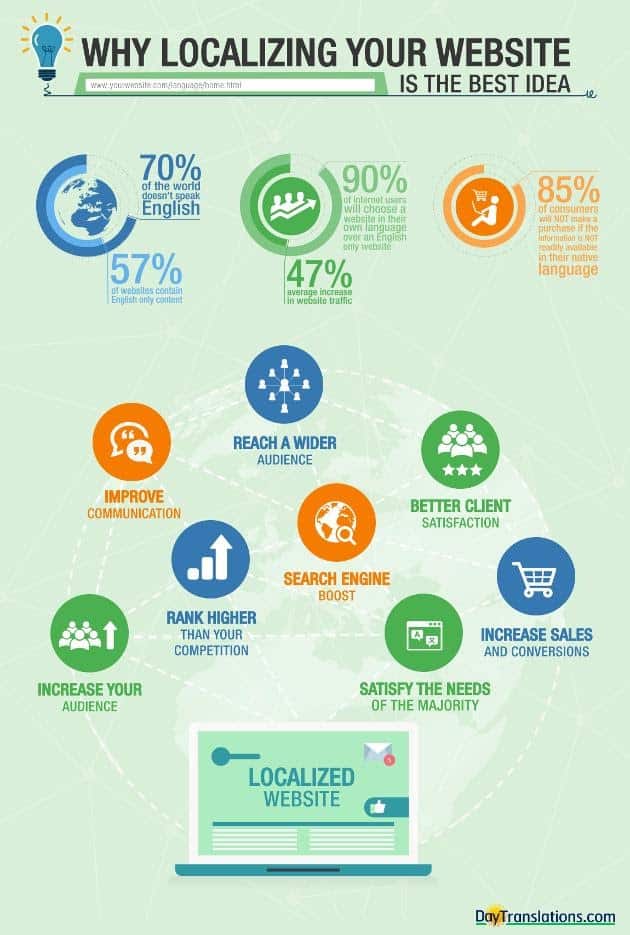If you’ve read our breakdown of Website Localization and Going Global, you’ll already know how it can help your business.
However, if you are still not convinced, take a look at this graphic from Day Translations for starters:

Just think how many new customers you could be reaching with this simple change!
So, how do you increase traffic with website translation? Don’t sweat it! We’re giving you three simple steps to help you get started.
#1. Define your target audience
Even with a great product, you could have a disadvantage in international markets by not tailoring content to your target audience. To all global users, the option to see content in their native languages is an enormous benefit, as they can experience what the English-speaking world has grown accustomed to.
If you have a website, you probably also monitor the incoming traffic. Most likely, you are already seeing visitors from various regions across the globe. Let’s say that users from Sweden, China, Spain, and Turkey are already coming across your site. However, rather than following through, they find the same thing on another website that offers a translation to their native language. Let’s break that pattern and infiltrate a new market!
Filtering your Google Analytics reports by region can be a great way to find out where your existing traffic arrives from. From here, you can decide if spending money on content translation is going to be justifiable. Hypothetically, let’s assume that a large amount of traffic is from Sweden. It makes sense to provide a Swedish translation as you have a lot of potential customers ready to be converted.
Going deeper, there are other factors to consider here if you want to increase traffic. Perhaps consider providing a version of your content in one of the world’s (and internet’s) most widely spoken languages? Spanish and Mandarin Chinese both rank highly in our Top 10 Languages for Localization, so would be worth looking into. Lastly, check out your competitors’ sites to see which audiences they are targeting across the globe. You don’t want to end up a step behind!
#2. Define the content for translation
Once you have decided on one or more given languages, you can go about selecting which content to adapt. Localizing your content makes you more relatable to your target audience and helps you to avoid making infamous translation fails! For more information about the differences between translation, localization, and transcreation, our breakdown article of the terms.
When planning something like eCommerce Localization, it’s usually not necessary to localize your whole website to help users navigate it. Your visitors are likely opening specific landing pages, explaining the product or pricing. To increase traffic whilst keeping costs down, start with these pages and expand from there.
#3. Define the translation approach
Once you’ve defined your most important parameters, you’ll need an effective way of organizing and handling the translation and localization.
While certain landing pages can be machine-translated, extremely important landing pages can be translated by professional translators. Some pages can be machine-translated and double-checked by you and your colleagues or reviewed by external human translators too. It’s up to you to choose the setup that best fits your needs. We outline some of the various approaches you could take in our comparative post on Local vs. Global Marketing.
So, are you ready to infiltrate new international markets, gain loyal customers and maximize your profits?
We are so excited for you to begin your journey. Remember, you can always reach out to our project managers to discuss the best method of translating efficiently, without compromising on quality.
One final tip from us…

